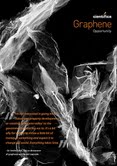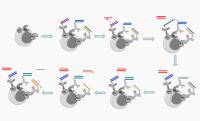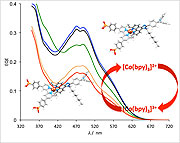Science
Hubble finds source of Magellanic Stream

Astronomers using the NASA/ESA Hubble Space Telescope have solved the 40-year-old mystery of the origin of the Magellanic Stream, a long ribbon of gas stretching nearly halfway around the Milky Way. New Hubble observations reveal that most of this stream was stripped from the Small Magellanic Cloud some two billion years ago, with a smaller portion originating more recently from its larger neighbour.
- Read more
- 389 reads
First Hundred Thousand Years of Our Universe

The microwave sky as seen by Planck. Mottled structure of the CMB, the oldest light in the universe, is displayed in the high-latitude regions of the map. The central band is the plane of our galaxy, the Milky Way.
- Read more
- 387 reads
Cientifica Releases the Graphene Opportunity Report: New report takes a rational view of graphene and identifies key opportunities

- Read more
- 391 reads
The Odd Couple

ESO’s Very Large Telescope has captured an intriguing star-forming region in the Large Magellanic Cloud — one of the Milky Way’s satellite galaxies. This sharp image reveals two distinctive glowing clouds of gas: red-hued NGC 2014, and its blue neighbour NGC 2020. While they are very different, they were both sculpted by powerful stellar winds from extremely hot newborn stars that also radiate into the gas, causing it to glow brightly.
- Read more
- 319 reads
DNA nanorobots find and tag cellular targets

This graphic shows a molecular robot (automaton) in action. To tag cells (grey circle) that display the Mi, Mj, and Mk receptors, five different components of a molecular robot are deployed. Each of the first three components consists of DNA and an antibody; one antibody binds to each receptor, bringing its DNA (represented by the colored lines) close together on the cell. The fourth DNA component, represented by the single red line, then initiates a chain reaction by pulling the red DNA strand away from the first antibody. That causes the blue DNA strand to change position, followed by the green DNA strand. In the final step, the last antibody pulls a fluorescent DNA strand (labeled F) from the fifth component, completing the action of the robot.
- Read more
- 400 reads
The Sun's Magnetic Field is about to Flip

A new ScienceCast video anticipates the reversal of the sun's global magnetic field.
http://science.nasa.gov/science-news/science-at-nasa/2013/05aug_fieldflip/
- Read more
- 331 reads
Making a Mini Mona Lisa: Nanotechnique creates image 30 microns in width

Gray Scale Mona Lisa
- Read more
- 356 reads
Alternative materials could bring 'plasmonic' technologies

This graphic depicts a device created using "negatively refracting metamaterials" that could bring advances in applications including sensing, imaging, data storage, solar energy and optics. Purdue researchers are working on a range of options to overcome a fundamental obstacle in commercializing the materials. The small spheres at right represent a lattice of "meta-atoms" carefully designed and fabricated to produce a high-performance device.
- Read more
- 334 reads
Cobalt Replacements Make Solar Cells More Sustainable

The dye-sensitized solar cell (DSC) converts light to electricity. A coloured copper complex absorbs light and injects an electron into a semiconductor. This electron then passes around a circuit, does work, and is eventually returned to the copper to regenerate the dye by a transport system. In this new work, the cobalt complex acts as an electron transport agent between the cathode and the dye molecules allowing the photocurrent to flow.
- Read more
- 326 reads
Human Rights
Fostering a More Humane World: The 28th Eurasian Economic Summi

Conscience, Hope, and Action: Keys to Global Peace and Sustainability

Ringing FOWPAL’s Peace Bell for the World:Nobel Peace Prize Laureates’ Visions and Actions

Protecting the World’s Cultural Diversity for a Sustainable Future

Puppet Show I International Friendship Day 2020


